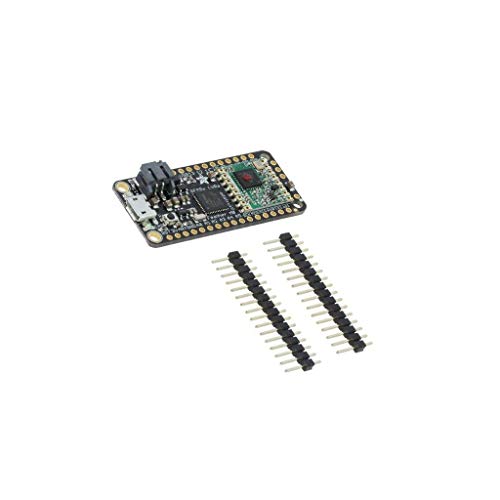
Our rankings are cleverly generated from the algorithmic analysis of thousands of customer reviews about products, brands, merchant’s customer service levels, popularity trends, and more. The rankings reflect our opinion and should be a good starting point for shopping. By purchasing the products we rank, you’ll get the lowest price we found while we may receive a commission at no cost to you, which will help us continue to provide you with value.
Advertising Disclosure
Adafruit Feather M0 With Rfm95 Loras of 2025
Save up to 14% off
- Best Choice
1
 Adafruit
AdafruitFeather M0 RFM96 LoRa Radio - 433MHz - RadioFruit Ada 3179
- Value for Money
2
 Adafruit
AdafruitAdafruit (PID 3010 Feather M0 WiFi - ATSAMD21 + ATWINC1500
3
AdafruitAdafruit Feather M0 Single Board Computer with RFM95 LoRa Radio - 900MHz
4
AdafruitAdafruit (PID 3072 RFM95W LoRa Radio Transceiver Breakout - 868 or 915 MHz
14% Off5
AdafruitAdafruit Feather M0 Adalogger [ADA2796]
-
See Today’s Deals & Prices
6
AdafruitWiFi / 802.11 Development Tools Adafruit Feather M0 WiFi - ATSAMD21 + ATWINC1500
7
AdafruitAdafruit Feather M0 WiFi with uFL - ATSAMD21 + ATWINC1500 - fw 19.4.4
12% Off8
AdafruitAdafruit (PID 3073 RFM96W LoRa Radio Transceiver Breakout - 433 MHz
9
AdafruitAdafruit (PID 3176 Feather M0 RFM69HCW Packet Radio - 868 or 915 MHz
10
AdafruitAdafruit (PID 3177 Feather M0 RFM69HCW Packet Radio - 433MHz





























![Adafruit Feather M0 Basic Proto - ATSAMD21 Cortex M0 [ADA2772]](https://cdn.gusav.com/b5c10142/loader.svg)
